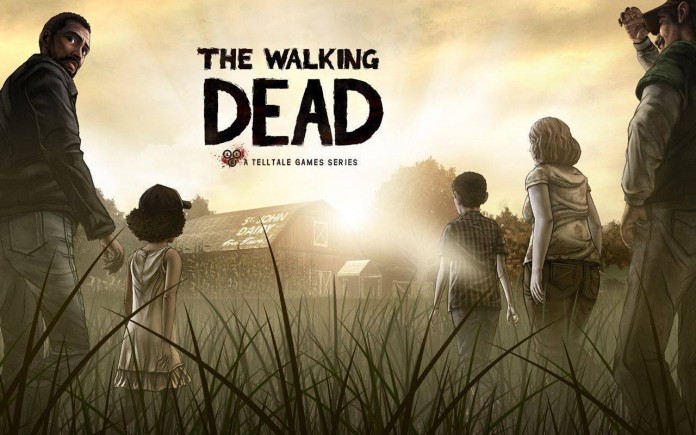“The Walking Dead” is one of the top rated games of all time. It also just so happens to be an indie game, which is surprising, seeing how successful it is. The key component that makes “The Walking Dead” so amazing is its interactive elements with the player. Unlike most zombie apocalypse games, this game is not very heavy in terms of violence. Rather than focusing on action, “The Walking Dead” focuses more on plot and character, making this more like an interactive movie rather than an actual game.
Each game of “The Walking Dead” is called a season and is divided into five episodes. While the overall plot of each episode and season is the same, each is still very choice and player oriented. At common points throughout the game, the player will get a set of (usually) four answers to choose from in a conversation or situation. Each answer you choose adjusts the output of the game and characters. For example; early on in the first season, you have a choice of saving a young adult or a little boy. Regardless of who you choose, the young adult will die and the little boy will survive. However, who you choose adjusts who will become your ally and might make certain events in the game happen sooner. Situations like this can be very stressful and lead the player into panicking, often making the wrong choice or simply act on impulse. Even though I know that the situations aren’t real, I find myself being very emotionally invested in my choices. It is also very stressful because you have a limited amount of time to select your answer, so you have to decide quickly.

Even though the player makes the majority of the decisions throughout the game, the characters are still very developed and unique on their own. In fact, the characters are most likely the main reason why this game is so successful. The character that you control is Lee Everett, a university professor who, at the very beginning of the game, is being escorted to jail in a police car. While your first impression of him is that he’s a cold hearted killer (he murdered a senator who was having an affair with his wife), you realize very quickly that Lee is a multi-dimensional character, and is not a completely bad person. You actually experience the beginning of the apocalypse with Lee. The police car swerves to avoid a walker (what they call zombies) and crashes. The police man dies and becomes a walker, which Lee has to escape the car from. As you run away from the walkers, you stumble upon the house of a little girl named Clementine. Clementine quickly wins over Lee’s, and the player’s, heart. Lee decides to act as Clementine’s protector, and the two set out together to find her parents.
Along the way, you encounter many other characters that join your group of survivors. Some, like Kenny, are also multi-dimensional, but serve as loyal allies and friends. Others, like Lilly, are not so well liked, and maybe even hated (at least, I hated her). The player can form their own opinions on each character, and can effect what that character does based on their choices. Each character is very realistic, and reminds the player of people they know in real life. This similarity makes it that much more impactful when things happen to these characters, and thinking that maybe your choice throughout the game had something to do with it.

The actual gameplay of “The Walking Dead” is not very intense. Most action scenes simply involve rapidly pressing one button or shooting a gun that’s automatically aimed for you. Not much skill is required, so almost any gamer can play it without difficulty. There are various puzzle-esque situations that you need to solve, but they are not nearly as difficult as the puzzles in games like “Limbo” or “Portal”. Focusing on the intense story and realistic, developed characters makes this game a truly interactive and interesting one.
Graphically, “The Walking Dead” has a very unique style choice. Since the game is based on the comic books, it has a comic based design. Everything is sharply outlined, and the colors are more intense than in real life. It also heavily focuses on light and shadow to create the eerie, creepy moods of a world in ruin. The characters also have intense colors and shadow, but still look fairly realistic. The music for these games also adds to the story, helping set the mood for the player.

Overall, “The Walking Dead” is one of those video games that I find strangely beautiful. The story of Season One is absolutely touching and heartbreaking. At the end of the game, Lee has been bitten and infected by a walker. You have the critical choice of asking Clementine to either shoot you in the brain so you don’t turn into a walker, or leave him there to turn and run. Whichever choice you make, it leaves you with a feeling of sadness and grief, especially knowing that Clementine now has to survive on her own. I haven’t been able to play any of Season Two yet, because I need to replay through Season One and make sure all of my choices are continuous, since they affect the game throughout. Even though I haven’t played Season Two yet, I know that it’s going to be amazing. That shows how much of an impact this game has had on me, and it’s one that you should definitely play too.
By the way, Uzer Friendly is hiring! If you’re interested, apply here: uzerfriendly.com/contact-us/
